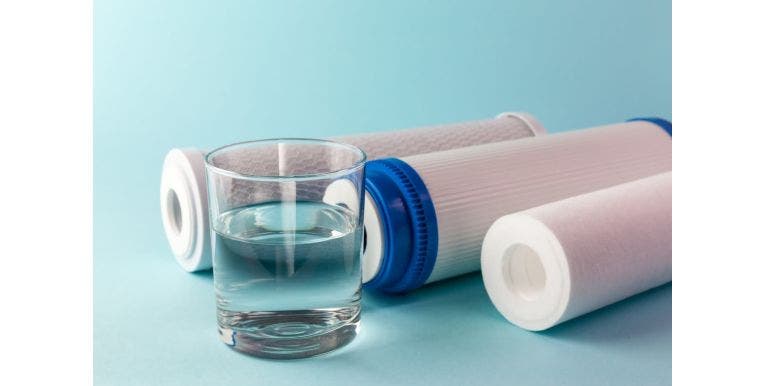Optimizing DI Cartridge Lifespan for Water Treatment
A DI cartridge, also known as a deionization cartridge, is used to purify water by removing dissolved ions. It is commonly used in water treatment systems, laboratory equipment, and industrial applications requiring high-purity water.
Di cartridge lifespan is five to ten years in a lab environment, depending on experiments and resins. DI cartridges are typically filled with ion exchange resins. These resins are designed to attract and bind to charged ions in the water.
The commonly removed ions include calcium, magnesium, sodium, chloride, and other dissolved salts. In this blog, all the essential information will be discussed to increase the lifespan of cartridges.
What are the Factors that Can Affect Di Cartridge Lifespan?
Before implementing tools and techniques to increase the filter’s life, it is essential to determine and minimize the factors affecting the quality and lifespan of resins. A few prominent factors are as follows.
Poor Quality of Water
This is the most important factor in the lifespan of cartridges. Water with a high ion rate or more salts can reduce the DI cartridge lifespan.. Soft water or less contaminated water can increase the life of the filter. Water pH can also affect the life and effectiveness of the filter sometimes.
Large Volume of Water
The more the volume of water, has less flow speed and more contaminations and salts in it. Small water bodies have the highest flow and less total dissolved solids (TDS). Processing larger bodies is complicated because of complex contaminations and ions, so that it may reduce the cartridge's lifespan.
Using Expired Or Foul Resins
It is impossible to tell the difference between a perfect and faulty purifying resin. So it is essential to keep track of the results and expiry dates of resins. It can also reduce the effectiveness of the process of purifying water.
Chlorine or Carbon dioxide Infused Water
But chlorine breaks the actual property of water, and it is challenging to purify it after it—the same pattern with the increased level of carbon dioxide in water. The extra effort and time to purify water will reduce the filter's lifespan.
Using Mixed Resins
While installing any cartridge, the seller might say mixing resins is a good idea. But combining two or more resins creates a ‘batch regeneration process’ in the filter. It may slow down the process, and results can be compromised because of the different properties of different resins. It is not advisable if an experiment depends on the quality of the water.
Different types of Di Water Cartridge Resins
Since naturally, the earth contains different kinds of water bodies, different types of resins are used to purify them. Some of the commonly used resins in laboratories that every scientific equipment supplier has in stock are as follows:
Activated Carbon
This type of resin is used to pretreat tap water before deionization. It will remove the traces of carbon and other impurities from the water through absorption. However, these resins do not affect the quality and property of tap water during the process.
Colloidal Removal Resin
Colloidal Removal resins remove the bacteria and colloids from the water. Colloids are very low-diameter particles responsible for surface water's clarity or color. It will give clean and transparent water with no bacterial property in it.
Cation Exchange Resin
Cation ions are positively charged, meaning they have fewer electrons and protons. Cation exchange resins remove these ions from the water and decrease the pH level to get neutrally charged water for experiments.
Anion Exchange Resin
Opposite to cations, Anion ions are negatively charged with high electrons and protons. Anion exchange resins will increase the pH level and remove negatively charged ions. As a result, pure and distilled water will be available for any lab experiment.
Oxygen Removal Resin
Oxygen removal from water may seem odd because, without oxygen (O), water becomes gas (H2). But in lab language, oxygen is removed from the water to reduce corrosion, weak heat transfer, and oxidation of foods and drugs.
Mixed Bed Ion Exchange
As the name suggests, these resins remove positively and negatively charged ions from the water. The water passes through the resins with opposite charges, removes the non-water components like salts or contaminations, and makes it more transparent and pure.
Organic Scavenger/Removal Resin
Organic Scavengers are the resins that remove the organic impurities in the water, for example, decaying vegetation. It traps the organic components and releases them to get pure water.
High Capacity Ion Exchange
Combines anion and cation resin in a 2-bed configuration. They are used for purifying large quantities of water at a lower purity level than those provided by mixed bed deionization. It may also be used to pretreat mixed-bed cartridges for longer di water cartridge.
Best Way To Increase Lifespan of Cartridge
DI cartridges have a finite lifespan, and it is crucial to establish a replacement schedule based on usage and water quality. Some cartridges have built-in indicators that change color or show a pressure drop when nearing exhaustion. However, regular water quality testing, meters testing, and monitoring is the most reliable way to determine when a DI cartridge needs replacement.
Understanding the DI cartridge and implementing proper maintenance practices can significantly impact their efficiency and value in water treatment applications. By considering factors like water quality, volume of water, and ion concentration, users can optimize the usage and extend the cartridge lifespan. Scientific equipment supplier Westlab Canada offers the best water filters on their website. By ordering them on their website, you can get them delivered to your doorstep.


